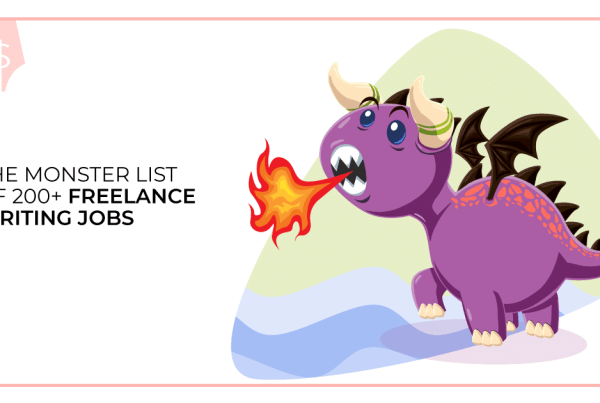Imagine traveling back to 2015 and telling your past digital marketing self that in ten years, even though people still use search engines, more than half of them never actually click a link. That’s the reality of zero-click search today, and like so many other marketing trends, AI is driving the change.
We’ve come a long way since the Google search engine results page (SERP) was just a list of links. Today, Google’s goal is to keep users on Google by providing answers that don’t require them to click away. Search engines increasingly deliver AI summaries, featured snippets, knowledge panels, and other content at the top of search results that never require a click.
Meanwhile, more and more searchers use large language models (LLMs) like ChatGPT and Perplexity as search engines, with answers entirely AI-based. Even when links are provided, people rarely leave their chat interface to visit another site. As digital marketing moves toward a zero click future, the strategies to gain organic search traffic have to evolve as well. This guide can help you get there.
As digital marketing moves toward a zero click future, the strategies to gain organic search traffic have to evolve as well.
The Rise of Zero Click Search and Its Impact on Search Engine Results
The concept of zero click search is simple, and its goal is simplicity for users. It means that when users enter a query into search engines, they can find their answer immediately instead of having to click through to a results page. And it’s a quickly rising concept: according to one study, more than half of all search queries today end without a click. For marketers, that means a substantial change in how visibility and authority are built.
Google has led this zero click trend, filling the SERP with featured snippets, knowledge panels, and other AI-driven enhancements that prioritize answers over links. As users become more accustomed to instant results, the challenge for businesses becomes finding ways to stay visible on the internet.
For marketers, that means a substantial change in how visibility and authority are built.
Again, one of the biggest drivers of this shift is AI search. AI overviews that summarize multiple sources and the rise of generative AI models that browse their entire database for comprehensive answers has changed user behavior. As we’ve explained elsewhere, content strategies have to evolve to meet the demands of this new reality.
To maintain brand visibility and sustain web traffic, marketers need to optimize for how content appears directly within the SERP. They need strategies that embrace this brave new zero click world.
Understanding AI Overviews, Featured Snippets, and Knowledge Panels
On a modern SERP, you’ll now find several key features that shape how users discover information. Understanding these elements is critical to maintaining brand authority and traffic in a zero click environment.
Three of the most common SERP features include:
- AI Overviews: Summaries that aggregate content from multiple sources. These overviews provide quick answers and support customer discovery of answers without a click.
- Featured snippets: Highlighted answers that appear at the top of search results and offer concise, actionable information. Optimizing content for snippets increases the likelihood that your brand will be visible when your audience asks a question.
- Knowledge Panels: Consolidated and verified data about a brand, product, or topic. They show up at the right of the SERP and tend to enhance credibility and authority on both mobile and desktop searches.
Optimizing for these features helps your brand maintain visibility in search engines. To get there, you’ll need to refine your content for zero click searches with the right framing and structured data that makes it easy for search engines to read.
Adapting SEO Strategies for Zero Click
Traditional SEO strategies are designed to drive clicks to a website. But what happens when users can find answers directly within the search results? Well, obviously, less clicks to your website. That said, you can optimize your content for search engines and ensure visibility. There’s value in that, even if clicks are less frequent than they used to be.
Getting there requires changing your approach to content marketing. At a high level, some of your key strategies should include:
- Targeting zero click queries by identifying common questions in your industry and creating content that directly answers them. Integrate related questions naturally to capture a broader audience and increase your chances of appearing in PAA boxes (more on those below).
- Leveraging structured data and schema markup. Prioritizing schema markup in your content creation ensures that search engines understand the context of your data and brand, improving your chances of appearing in featured snippets and other zero click features.
- Using AI insights. Just as AI now drives the content you’ll find on a SERP, generative AI can help you identify which queries are most likely to trigger zero click results, helping you optimize your content for maximum visibility in limited space.
Above all, though, you need to build a data-driven content strategy that considers this new SEO reality.
People Also Ask boxes, or you’ll see it referred to as the PAA box, are a core feature of today’s search engine results page. They let users dig deeper on a topic without having to click on additional pages or start new searches, while providing marketers with a clear path to target high-intent queries and improve visibility directly on Google.
Taking advantage of this feature sounds deceptively simple. Identify the questions your audience tends to ask about your product category or industry, then optimize content around them. The more concise and clear, the higher your chances of appearing in a PAA box. Bullet points, numbered lists, and structured headings all help search engines read that content.
Optimizing for related questions also expands your marketing reach. If you can anticipate follow-up queries and craft content that addresses them, you can help users find value immediately. At best, it all becomes part of a broader content marketing strategy that focuses on the key questions your users ask, and answering in clear and simple ways.
Mobile Search and User Experience
Mobile searches have played a central role in SEO for years now. They’ve also driven the rise of zero click search, with users expecting answers quickly and efficiently. Google prioritizes mobile-friendly content, and websites that fail to meet these expectations risk reduced visibility.
Optimizing your content for mobile means making sure that it’s scannable, responsive, and fast-loading. Even if users don’t visit your site, clear and engaging content can strengthen your brand recognition and authority. As with desktop searches, structured content and concise answers increase the likelihood your brand will appear in one of the zero-click features.
To get there, monitor and regularly review metrics on how your content surfaces in zero-click contexts, and how that changes between mobile and desktop. Create a report that makes it easy to compare the same data and spot trends over time. Similar reports can also help you align your zero click strategy with your broader marketing strategy.
Measuring Success Beyond Clicks: Brand Authority and Visibility Metrics
In a zero-click landscape, traditional metrics like clicks and web traffic don’t tell you the full story. You’ll also need to review impressions, knowledge panel visibility, and PAA placements to fully understand how your audience engages with you. Search engines like Google reward authoritative, well-structured content with a clear target on user intent, whether or not the user actually clicks through.
Target and review metrics that reflect your brand’s authority. For example, you can measure how often your content appears in Google’s featured snippets or as part of AI overviews. Doing so will give you insight into the effectiveness of your content and its structure. Other reports to review may include visibility trends, query coverage, and content performance across mobile and desktop.
Through the right reports, you can begin to build data-driven strategies that ensure consistent improvement. Regular audits of zero-click features help to maintain a competitive edge in this environment, optimizing your entire zero-click SEO strategy over time.
Future-Proofing Your Marketing with AI and Verblio Plus
Zero click search is not the end of SEO, it’s just the next evolution. As with every change, it’s hard, but you have to adjust. The same thing that’s driving the trend can also help you succeed within it: Generative AI. Use GenAI tools to help you research and build content designed for featured snippets and PAA boxes. It works fast and can help you keep up.
Use GenAI tools to help you research and build content designed for featured snippets and PAA boxes.
Above all, these changes require attention and the ability to scale. That’s where Verblio Plus comes in, helping marketing teams of all sizes scale their content efficiently while staying aligned with zero-click trends. We’ll help you review your current content to see where optimization may be necessary, then help in both optimizing it and creating new content to fill the gap. Just as importantly, we’ll regularly review your search engine and content data with you, so you’re always in the loop on how things are going and where improvements may be needed.
In this new reality of zero click, we’ll help you optimize your content to remain visible and competitive, even as user behaviors shift. Work with us to strengthen your brand authority, improve user experience, and maintain a visible search engine presence. Learn more about Verblio Plus today.
Source link





